
Quarterly Market Outlook
Q4 2025
As the “autumn leaves of red and gold drift by our windows”—to paraphrase a once-popular jazz ditty—we are reminded not only of changing seasons but also of shifting policy sentiment and market trends.
The Fed has revealed a new stance based on views that competing forces between inflation concerns and a weaker labor market are now tipping its hand in favor of growing labor market deterioration. Given the Fed’s more dovish stance than previously expected, we believe they will remain extremely sensitive to variability in high frequency data—and further err on the side of caution in the absence of data releases with the government shutdown.
Of major significance is the verdict on inflationary flow-through from tariffs. In terms of timing, we are of the belief that tariff tolls have yet to seep through our pocketbooks, and we suspect that there is more to come in 1H’26. In terms of impact, however, it remains unclear if these inflationary forces—both from tariffs and the immigration policies enacted by the administration—will prove to be transitory or create a permanent shift in demand and growth dynamics.
Q3 growth data exhibited a rebound from early 2025 weakness, and Q4 should benefit from marginal easing in monetary policy. However, parsing through the data reveals softness in several key factors related to wage growth and job openings. Coupled with large revisions to employment figures (both foregone and impending) and the shifting equilibrium between labor supply and demand, the data has prompted the Fed to “risk-manage” their policy stance with preemptive rate cuts.
Valuations in both equities and corporate credit markets look stretched across various metrics, and it is atypical for a dovish monetary policy to accompany such elevated financial conditions. This, together with a bull steepening in the yield curve creates a new risk/reward distribution. We expect market volatility to pick up over the next 12 months as the balance of risks between a new growth cycle and recession remain roughly equal in our view.
The confluence of these factors—a shifting Fed reaction function, labor market uncertainty, stretched valuations, and recessionary yield curve dynamics—creates a situation where the macro environment is akin to a rolling marble on a glass table. The market will be forced to grapple with rapidly changing signals, while there is little room for error priced in. We think this is an opportune time in the cycle to harvest gains from equities and allocate risk to asset-backed credit, where yields are still attractive, downside risk is shallower, and coupons may be a major driver of returns when spreads are tight.
Going forward, corporate margins risk being squeezed as labor inputs rise and supply chain disruptions react to inflation and immigration policies. Also, given the policy easing against a backdrop of reduced regulation, the environment is more susceptible to creative accounting and corporate earnings manipulation. We look back at the drivers of the ’00-’02 recession, and in a similar vein will be keeping a vigilant eye on international developments and earnings data.
In our Q2 and Q3 outlooks we meaningfully shifted the likelihood of a recession to 30% over the coming year. We continue to maintain this stance, albeit with a revised posture that puts equal weight (30%) on an inflationary bull expansion driven by dovish monetary policy. A soft landing remains the most likely outcome (40%) in our view. The wealth effects from strong equity and housing markets have so far outweighed any negative income effects. Hence, employment data, and the Fed’s reaction, will be critical in determining the path ahead.
When looking across the landscape of asset classes in credit, we see higher risks in corporate debt than in places like real estate, which should benefit from lower rates and a stronger household balance sheet. Key to assessing risks and navigating the credit ecosystem will be workout capabilities and the necessary resources to adjust to a later stage credit cycle. The current environment feels like a new and different phase in the ongoing quest for yield and returns. Diversifying those sources of returns and factor risks will play an integral role in staying ahead and achieving one’s portfolio goals.
Corporate Direct Lending
- The average default rate (as defined by loan covenant defaults) has continually increased since 3Q24, reaching 3.4% in 2Q25.
- Competition in direct lending continues to be a theme. Spreads tightened further QoQ, particularly for LBO financings as the broadly syndicated loan (BSL) market has reopened in an environment with ample dry powder.
Real Estate Lending
- Residential home inventory has increased relative to 2022-2024 but aggregate housing supply as of August 2025 is still below 2016 levels, possibly evidencing the “lock-in” effect homeowners have with existing mortgages. Constrained supply continues to underpin home prices across several geographies.
- As affordability challenges persist, new financing models, such as ground leasing and home equity investments, are starting to grow.
- The NAHB estimates the average age of the US housing stock is 40 years old, a record high. Given affordability and supply challenges, residential transition lending should continue to be a high-growth segment of the market.
Asset-Based Consumer Lending
- Certain consumer segments are seeing the highest delinquency rates for prime borrowers in over a decade—albeit, in absolute terms the numbers are modest.
- Credit card delinquency rates looked to have peaked and appear to be decoupled from the labor market weakness recently seen in terms of job revisions.
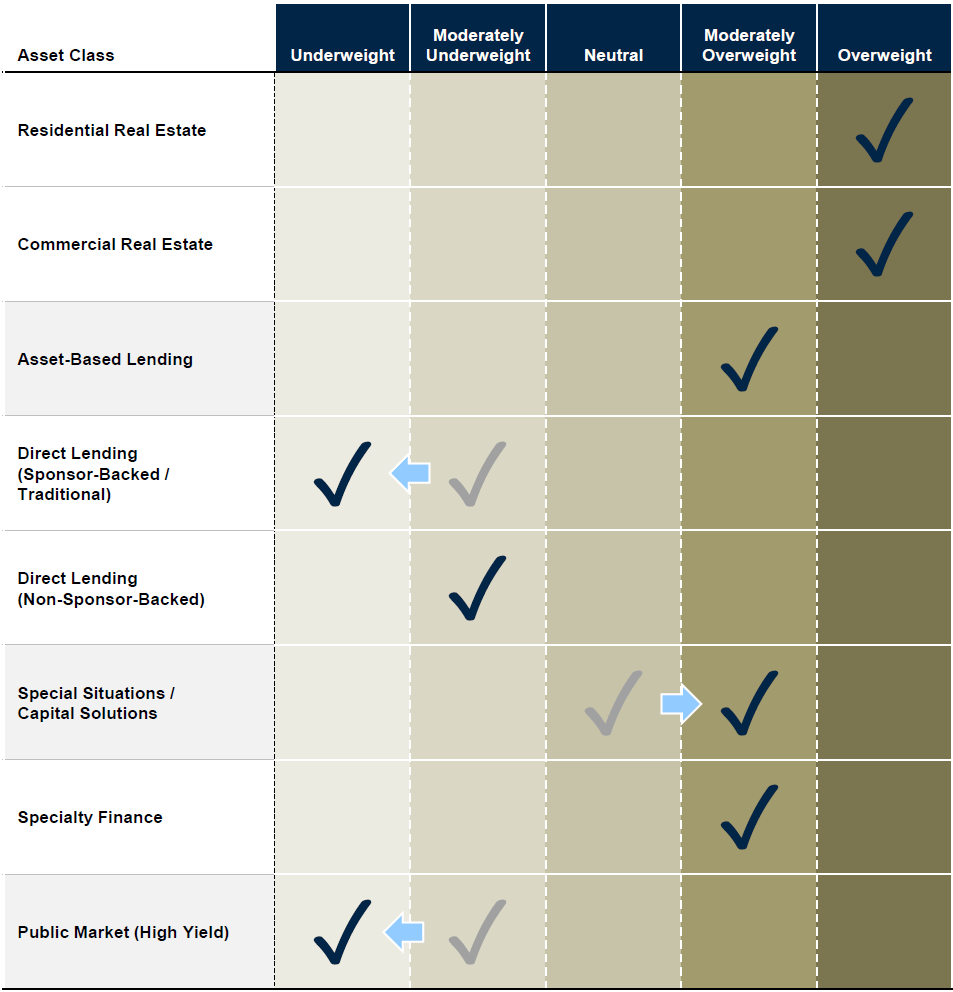
The views expressed in this chart are those of the Investment Team of Nomura Capital Management LLC and are based on the Investment Team’s forward-looking assessment of credit markets as of the date referenced above. The views expressed herein are subject to change at any time following the publication of this report. The arrows in the chart reflect the change in the Investment Team’s outlook of each credit market since its prior quarterly market commentary. This chart is provided for informational purposes only and is not intended to represent a recommendation from Nomura Capital Management LLC to invest in, or divest from, the credit market asset classes referenced herein.
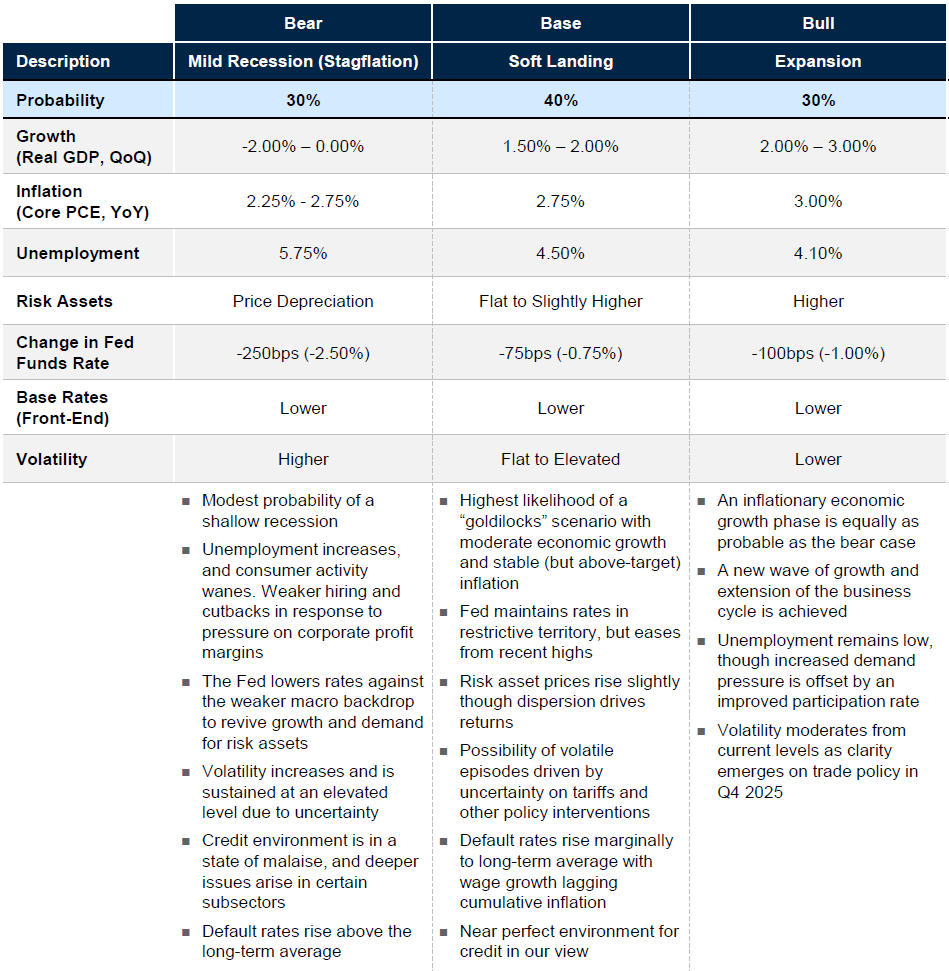
The views expressed in this chart are those of the Investment Team of Nomura Capital Management LLC and are based on the Investment Team’s forward-looking assessment of the general macroeconomic environment as of the date of this report. The Bull/Base/Bear Market (“Market Scenarios”) outcome probabilities noted in this report reflect the Investment Team’s forward-looking estimate of the probability of each Market Scenario occurring within the next 12-18 months from the date of this report. The market metrics noted within this report (Growth, Inflation, Unemployment, Risk Assets, Base Rates and Volatility) represent the Investment Team’s forward-looking estimate of each market metric resulting from the corresponding Market Scenario. All views and estimates contained within this report are as of the date of this report and are subject to change at any time following the publication of this report.
Housing completions have failed to keep pace with household formation for over a decade, creating a chronic supply deficit. This shortage is intensified by a ‘lock-in’ effect, as 91% of outstanding mortgages have coupons below the current market rate, severely limiting existing home inventory and providing a durable floor for home prices.
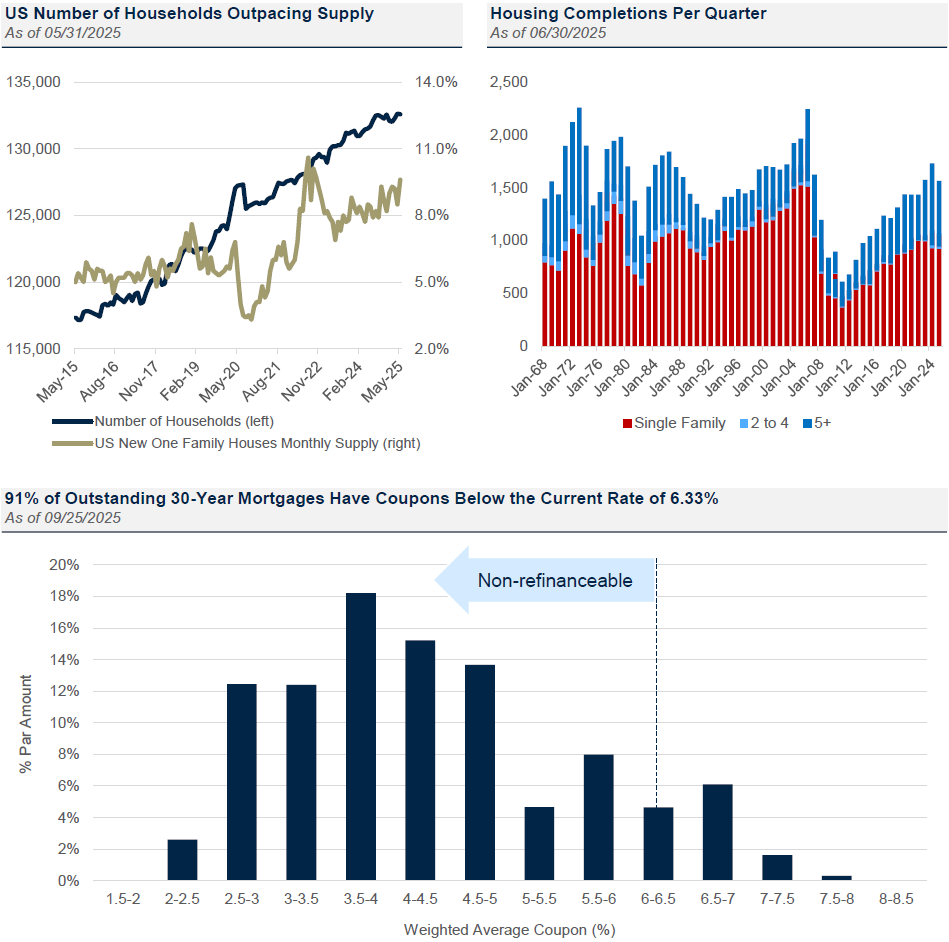
Data sourced from Bloomberg, Federal Reserve Bank of St Louis

Sources: U.S. Bureau of Labor Statistics via FRED, National Bureau of Economic Research, Apollo

◼ The overall health across US Corporate Investment Grade and High Yield remains strong, with healthy balance sheets and margins amid a moderate decline in interest coverage ratios and increase in leverage.
◼ High Yield has seen a mild EBITDA margin compression over the past four quarters while pricing today remains close to historical tights. During this stage of the cycle, there is limited room for upside and higher susceptibility to volatility.
Source: J.P. Morgan Research, Bloomberg. EBITDA margins are trailing twelve months. High Yield EBITDA margin since 20Q2 is adjusted.

◼ While the South has been the best performing region over the long term, it has lagged other regions over the 12 months between 24Q2 and 25Q2 in Multifamily.
◼ The opposite can be said of the Northeast, which has exhibited the least appreciation across sectors over the long term. However, in the 12 months between 24Q2 and 25Q2, the Northeast’s Multifamily price index had the strongest growth at 8%.
◼ The worst performer during this timeframe was the Northeastern Office market at -5%, but positive quarterly price appreciation from 25Q1 to 25Q2 which implies an early signal of stabilization.
Source: CoStar
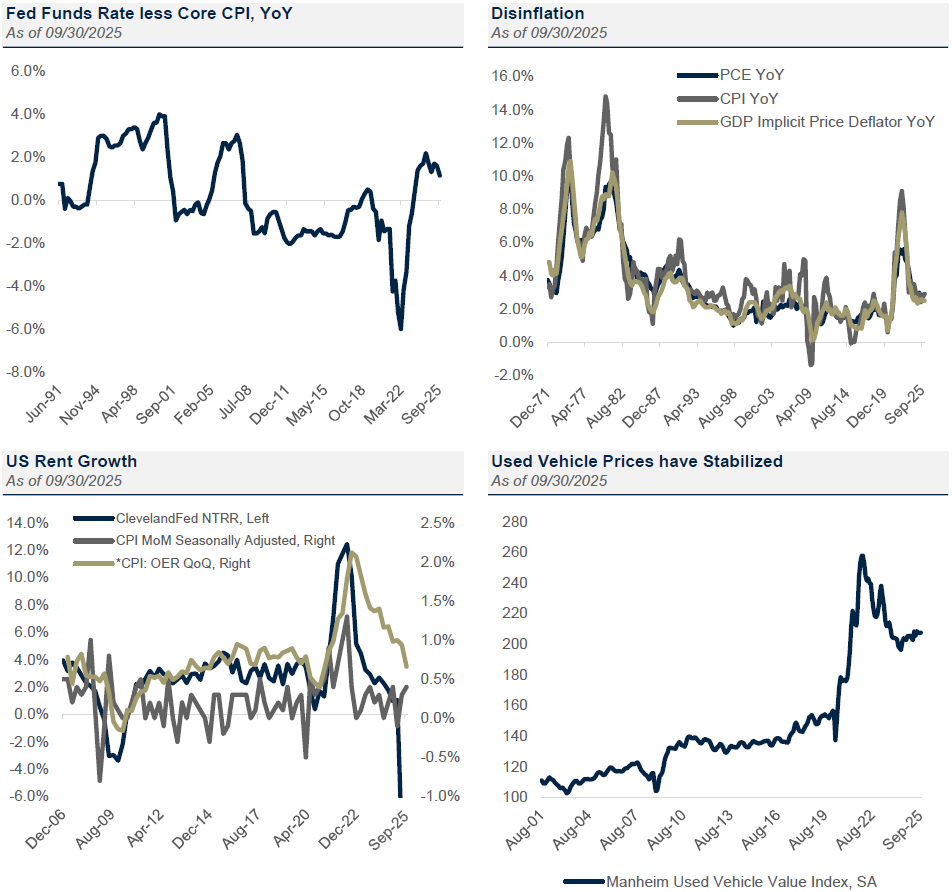
Data sourced from Bloomberg
CPI = The Consumer Price Index; PCE = Personal consumption expenditures; Cleveland Fed NTRR = Federal Reserve Bank of Cleveland New Tenants Repeat Rent Index; CPI OER = Consumer Price Index Owners’ Equivalent Rent
CPI is a measure of inflation compiled by the US Bureau of Labor Studies. PCE stands for Personal Consumption Expenditures, which is a measure of how much money US households spend on goods and services. It’s a key indicator of economic growth and inflation.
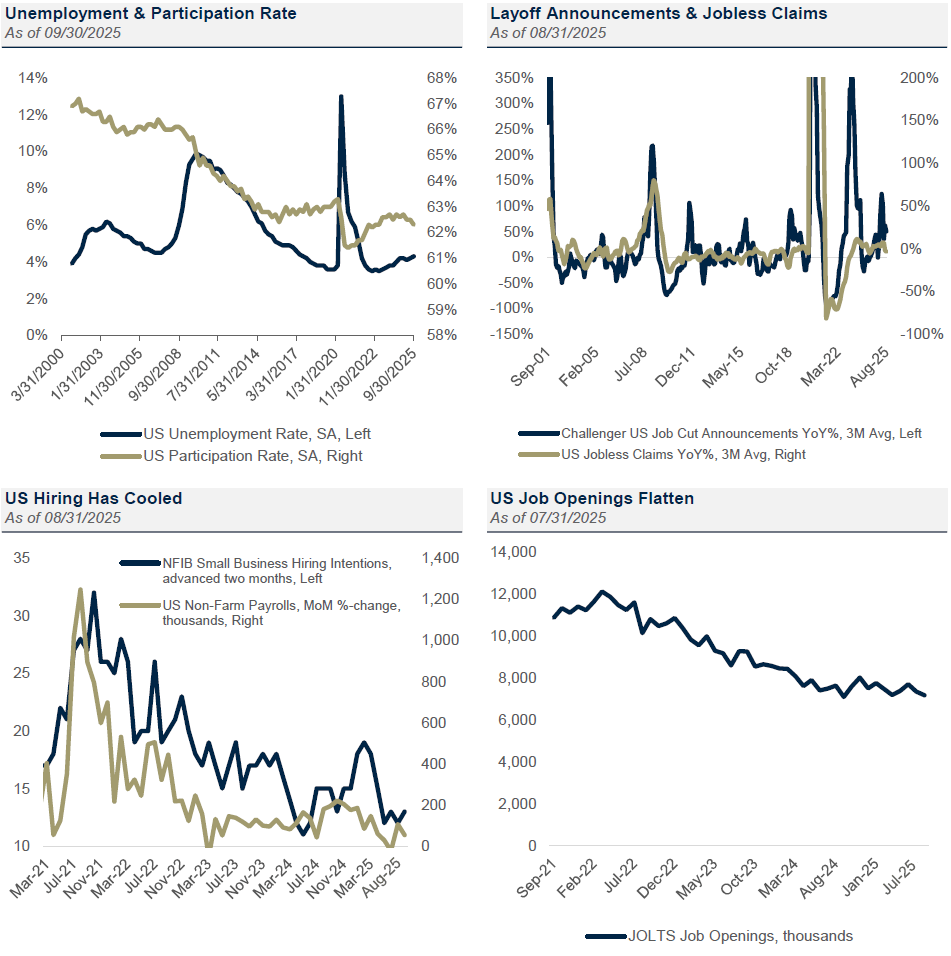
Data sourced from Bloomberg
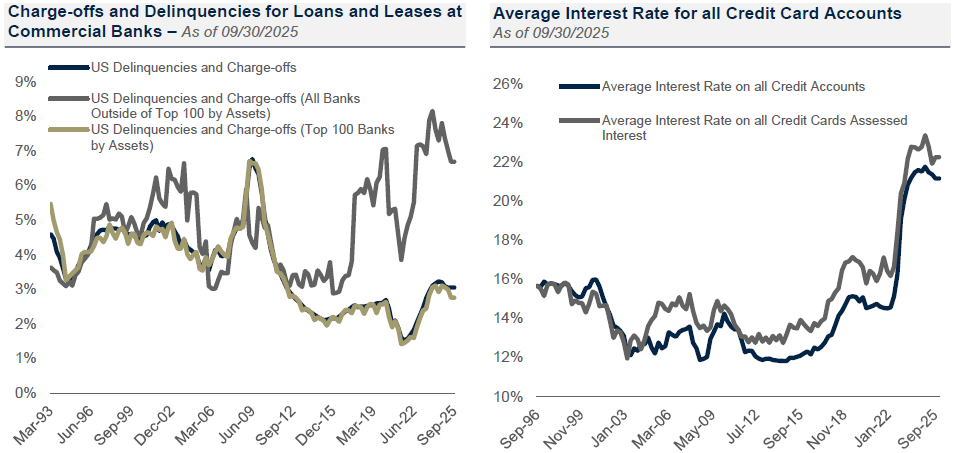
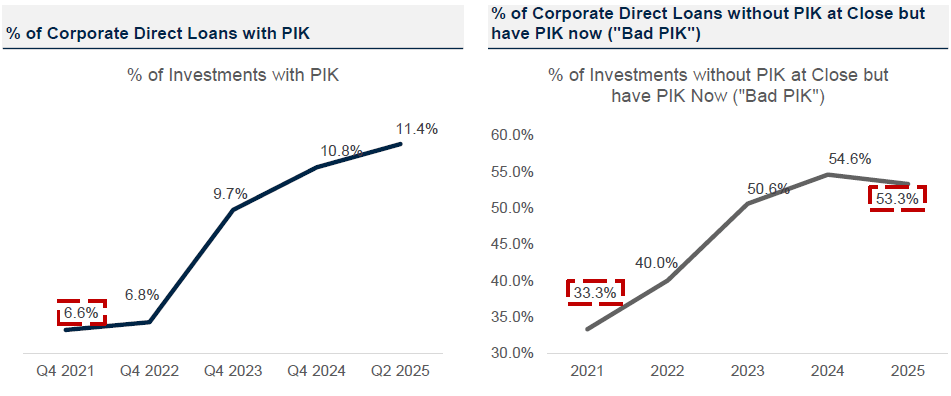
Data from Bloomberg, Lincoln International
C&I Large = Commercial & Industrial Large Energy Users; C&I Small = Commercial & Industrial Small Energy Users
FOMC: More dovish stance with a focus on stemming labor market deterioration.
Inflation: Tariff and immigration policy impacts working their way through the economy.
Labor market: Hiring and employment key to demand and growth; labor force size and participation rates are rapidly changing due to lower net immigration and record retirement of baby boomers.
Growth: The balance of risks between a recession and a new, inflationary growth cycle remain roughly equal in our view.
What we like:
What we don’t like:
What we are reading:
This is for informational purposes only and is not intended to represent a recommendation from Nomura Capital Management LLC to invest in, or divest from, the credit market asset classes or security types referenced herein.
These materials reflect the opinion of NCM on the date of production. Opinions and statements of financial market trends that are based on current market conditions constitute our judgement and are subject to change without notice. Past performance does not guarantee future results. Where data is presented that is prepared by third parties, such information will be cited, and these sources have been deemed to be reliable. However, NCM does not independently verify or otherwise warrant the accuracy of this information. All investments are subject to risks, including the risk of loss of principal.




